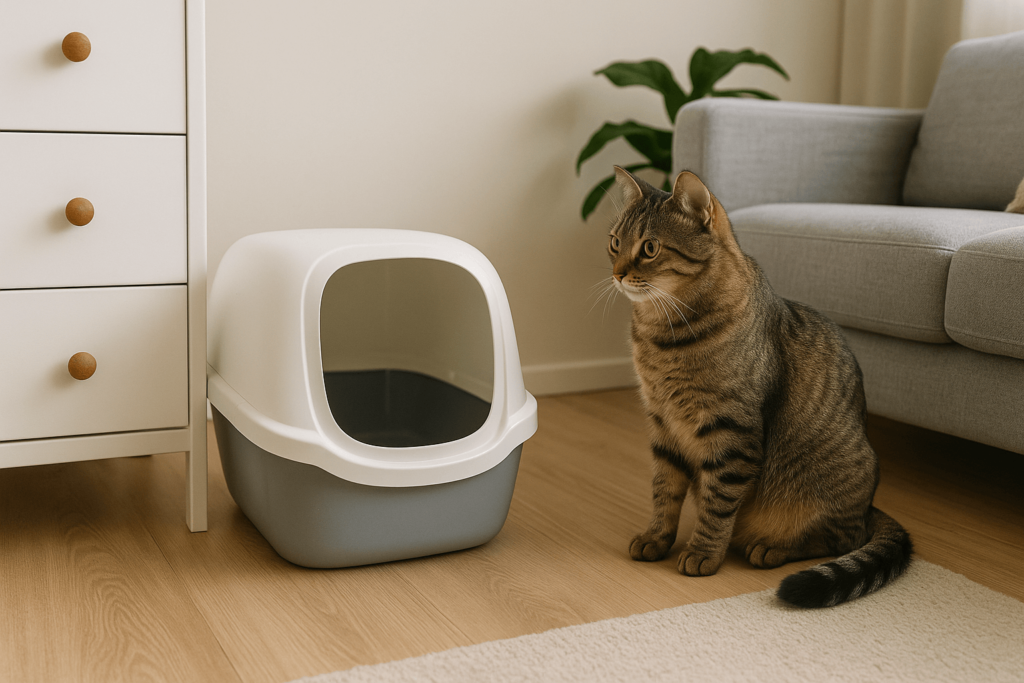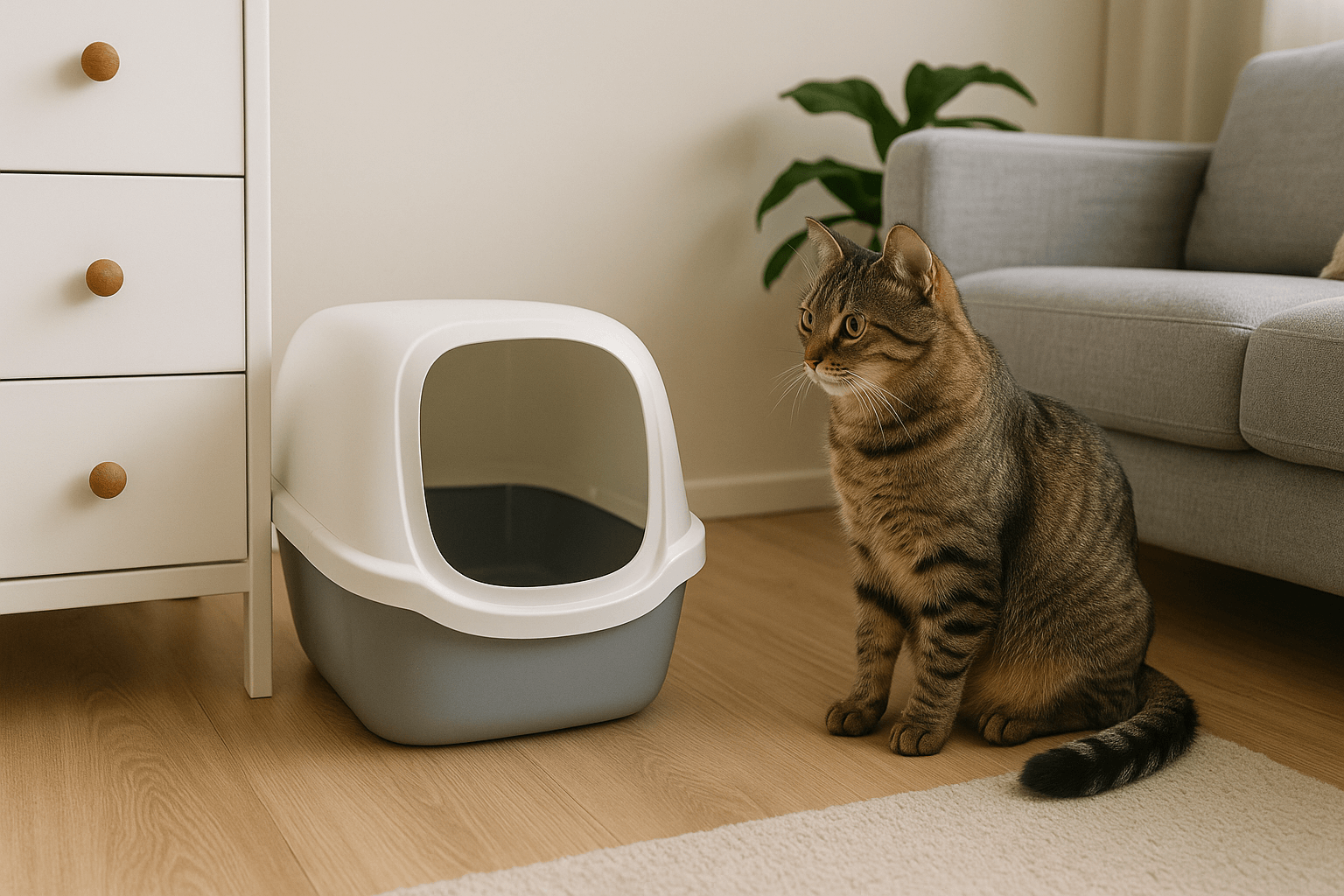Where to Place a Cat Litter Box? A Guide for Happy Cats and Peaceful Homes
One of the most important decisions you’ll make as a cat owner is where to place your cat’s litter box. While it may seem like a simple task, the location of the litter box can significantly impact your cat’s comfort, behavior, and even your home’s cleanliness. Cats are naturally clean and private animals, and they have strong preferences when it comes to their bathroom habits. Placing the litter box in the wrong spot could lead to accidents, stress, or even litter box avoidance. In this guide, we’ll explore expert tips and practical advice to help you choose the perfect location for your cat’s litter box—one that keeps both your feline friend and your household happy.
Key Factors to Consider When Placing a Cat Litter Box
Choosing the right spot for your cat’s litter box requires careful thought about your cat’s needs and your home’s layout. Here are some essential factors to keep in mind.
Accessibility for Your Cat:
Ensure the litter box is easy for your cat to reach, especially if they are elderly, young, or have mobility issues. Avoid placing it in hard-to-reach areas like high shelves or behind furniture.Privacy and Quiet:
Cats prefer a private, quiet space for their bathroom activities. Avoid high-traffic areas like living rooms or kitchens where they might feel exposed.Distance from Food and Water:
Cats instinctively avoid eliminating near their eating area. Keep the litter box at least a few feet away from their food and water bowls.Ventilation and Odor Control:
Place the litter box in a well-ventilated area to minimize odors. However, avoid drafty spots that might make your cat uncomfortable.Multiple Levels of the Home:
If you live in a multi-story house, consider placing a litter box on each level to ensure easy access for your cat.
By considering these factors, you can create a litter box setup that meets your cat’s needs while maintaining harmony in your home.

Common Mistakes to Avoid When Choosing a Litter Box Location
Even well-meaning cat owners can make mistakes when deciding where to place their cat’s litter box. Avoiding these common pitfalls ensures a stress-free experience for your pet.
Placing It Too Close to Noise Sources:
Loud appliances like washing machines or furnaces can scare your cat away from using the litter box. Choose a calm, quiet location instead.Hiding It Completely Out of Sight:
While privacy is important, hiding the litter box in an inaccessible or dark corner can discourage your cat from using it. Strike a balance between privacy and accessibility.Using Tight or Confined Spaces:
Cats need enough room to move comfortably around the litter box. Avoid cramped areas like closets or tiny nooks.Ignoring Your Cat’s Preferences:
Every cat is different—some prefer open spaces, while others like enclosed areas. Pay attention to your cat’s behavior to determine what works best.Placing It Near High-Traffic Areas:
Cats dislike feeling watched or disturbed while using the litter box. Keep it away from busy hallways or shared spaces.
Avoiding these mistakes helps ensure your cat feels comfortable and secure when using their litter box.
Check this guide 👉How Big Should a Cat Litter Box Be? Best 7 Expert Tips!
Check this guide 👉Do Ants Like Cat Litter? Best 7 Expert Tips!
Check this guide 👉Cat Litter Cost Per Month: Best 7 Expert Tips!
Ideal Locations for a Litter Box | Areas to Avoid for Placement |
|---|---|
Quiet corners in bedrooms or bathrooms | Noisy areas near appliances |
Easily accessible spots on each floor | Tight spaces like closets |
Well-ventilated but draft-free zones | Near food and water bowls |
Private areas away from high traffic | Dark, hidden corners |
Central locations for single-floor homes | Busy hallways or entryways |
Tips for Multi-Cat Households
If you have more than one cat, proper litter box placement becomes even more critical. Cats can be territorial, and competition over resources can lead to stress or behavioral issues. Follow these tips to ensure harmony among your feline family members.
Provide One Box Per Cat Plus One Extra:
The general rule is to have one litter box for each cat, plus an additional one. This reduces competition and prevents territorial disputes.Spread Boxes Throughout the House:
Place litter boxes in different areas of your home to give each cat their own space and avoid overcrowding.Choose Neutral Zones:
Avoid placing all litter boxes in one room, as this can create tension among cats. Opt for neutral, non-threatening areas instead.Respect Individual Preferences:
Some cats may prefer covered boxes, while others like open ones. Cater to each cat’s unique preferences when selecting locations.Monitor Usage Patterns:
Observe how your cats interact with their litter boxes and adjust placements as needed to prevent conflicts or avoidance.
By following these guidelines, you can maintain peace and satisfaction for all your furry companions.
How to Transition a Litter Box to a New Location
Moving a litter box to a new spot can be stressful for your cat, but with patience and planning, you can make the transition seamless. Here’s how to do it effectively.
Gradual Relocation:
Move the litter box a few inches or feet at a time toward the new location. Sudden changes can confuse or upset your cat.Maintain Familiarity:
Keep the same type of litter and box to avoid overwhelming your cat during the transition.Use Positive Reinforcement:
Reward your cat with treats or praise when they use the litter box in its new location to encourage acceptance.Monitor Behavior Closely:
Watch for signs of stress or litter box avoidance after the move. Address any issues promptly to prevent accidents.Clean the Old Spot Thoroughly:
Remove lingering scents from the previous location to discourage your cat from returning to eliminate there.
With a thoughtful approach, transitioning your cat’s litter box can be a smooth and stress-free process.
Signs Your Cat’s Litter Box Placement Needs Adjustment
Sometimes, your cat’s behavior will indicate that the current litter box location isn’t working. Recognizing these signs can help you make necessary changes quickly.
Eliminating Outside the Box:
If your cat starts peeing or pooping outside the litter box, it could mean the location is inconvenient or unpleasant for them.Meowing or Pacing Near the Box:
Vocalizations or pacing may signal discomfort or dissatisfaction with the box’s placement.Refusing to Enter a Room:
If your cat avoids entering the room where the litter box is located, it might be too noisy or crowded.Digging Around the Box Area:
Excessive digging outside the box could indicate dissatisfaction with its location or cleanliness.Increased Aggression Toward Other Pets:
Territorial behavior may arise if the litter box is placed in a shared or competitive space.
Addressing these signs promptly can restore your cat’s comfort and prevent further issues.
Benefits of Proper Litter Box Placement
Getting the location right offers numerous benefits for both your cat and your household. These advantages highlight why thoughtful placement matters.
Reduces Accidents in the Home:
A well-placed litter box minimizes the likelihood of your cat eliminating in inappropriate areas.Promotes Good Hygiene Habits:
Proper placement encourages consistent use of the litter box, keeping your home cleaner.Decreases Stress for Your Cat:
A comfortable location helps reduce anxiety and promotes overall well-being for your feline friend.Improves Relationships Between Cats:
Strategic placement in multi-cat households fosters harmony and reduces territorial disputes.Enhances Your Living Environment:
A well-thought-out setup keeps odors under control and maintains a pleasant atmosphere in your home.
Proper litter box placement truly benefits everyone involved, creating a win-win situation.
Creative Solutions for Challenging Spaces
In smaller homes or apartments, finding the ideal litter box spot can be tricky. These creative solutions can help you maximize limited space while meeting your cat’s needs.
Use Vertical Space:
Consider wall-mounted shelves or tall cabinets to tuck the litter box out of sight without sacrificing accessibility.Utilize Dividers or Screens:
Decorative screens or room dividers can provide privacy for your cat while keeping the box discreetly hidden.Opt for Compact Litter Boxes:
Smaller, sleek litter boxes take up less space and blend seamlessly into tight areas.Repurpose Furniture:
Convert side tables or benches with hollow interiors into cleverly disguised litter box enclosures.Leverage Outdoor Patios (Weather Permitting):
For indoor-outdoor cats, a weatherproof litter box on a patio or balcony can be a great solution.
Thinking outside the box (pun intended!) allows you to adapt your space creatively while ensuring your cat’s comfort.
Frequently Asked Questions About Cat Litter Box Placement
Where should I put my cat’s litter box in a small apartment?
Choose a quiet corner that’s easily accessible but not in the main living area. Bathrooms or laundry rooms often work well.
Can I place the litter box in my bedroom?
Yes, if it’s convenient for your cat and you don’t mind sharing the space. Use odor-control litter and clean the box regularly.
What if my cat refuses to use the litter box?
Check the location, cleanliness, and type of litter. Experiment with different placements until you find what works.
Should I cover the litter box?
Some cats prefer covered boxes for privacy, while others feel trapped. Test both options to see which your cat prefers.
How often should I clean the litter box?
Scoop daily and change the litter completely at least once a week to keep it fresh and appealing to your cat.
Creating a Stress-Free Litter Box Experience
Finding the perfect spot for your cat’s litter box is crucial for their happiness and your household’s harmony. By considering factors like accessibility, privacy, and odor control—and avoiding common mistakes—you can set up a litter box that meets your cat’s needs while keeping your home clean and peaceful. Remember, every cat is unique, so stay observant and adaptable to their preferences. With a little effort and understanding, you can ensure your feline companion enjoys a stress-free bathroom experience, fostering a healthier and happier relationship between you and your pet.
How to Register a Therapy Cat: Best 7 Expert Tips! Discover essential steps to certify your cat as a therapy animal, prepare them for training, and make a meaningful impact in therapeutic settings.
Understanding Osteoarthritis in Cats: Best 7 Expert Tips! Learn how to identify, manage, and improve your cat’s joint health with practical advice from veterinary experts.
Tabby Cat vs Tortoiseshell: Best 7 Expert Tips! Discover the differences in patterns, personalities, and care needs between tabby and tortoiseshell cats to find your perfect feline companion.
Understanding Trichomoniasis in Cats: Best 7 Expert Tips! Discover symptoms, treatment, and prevention strategies for this common feline parasite to keep your cat healthy and happy.





